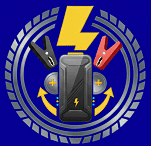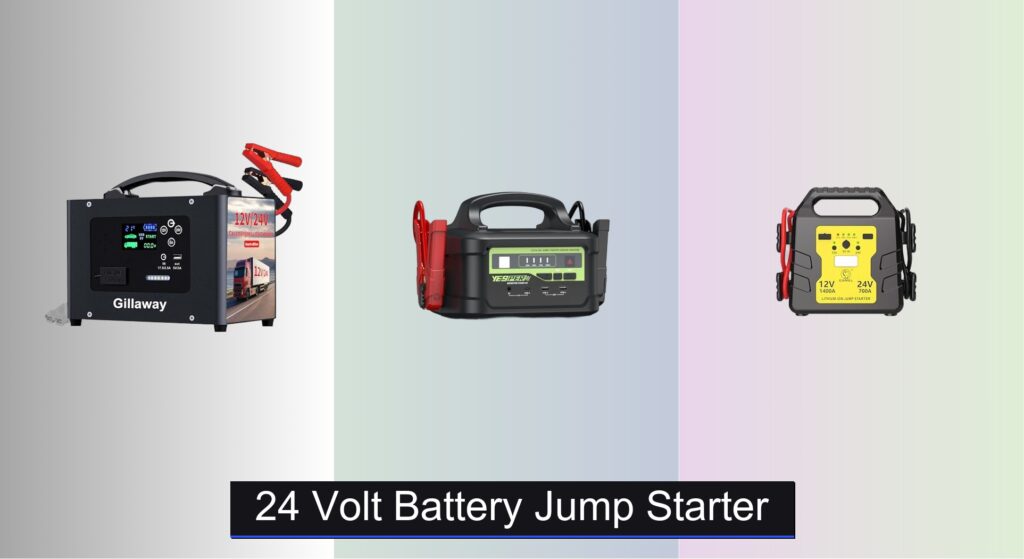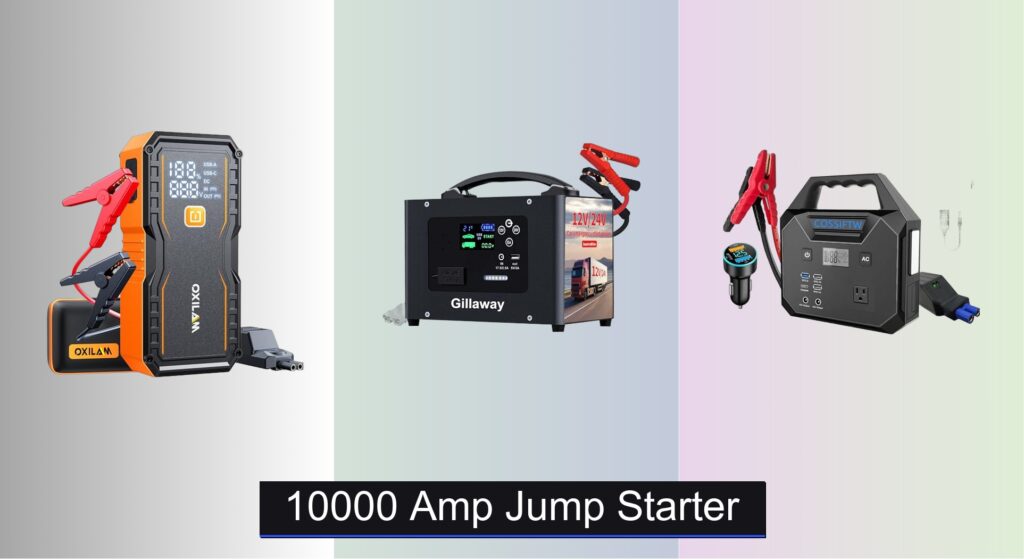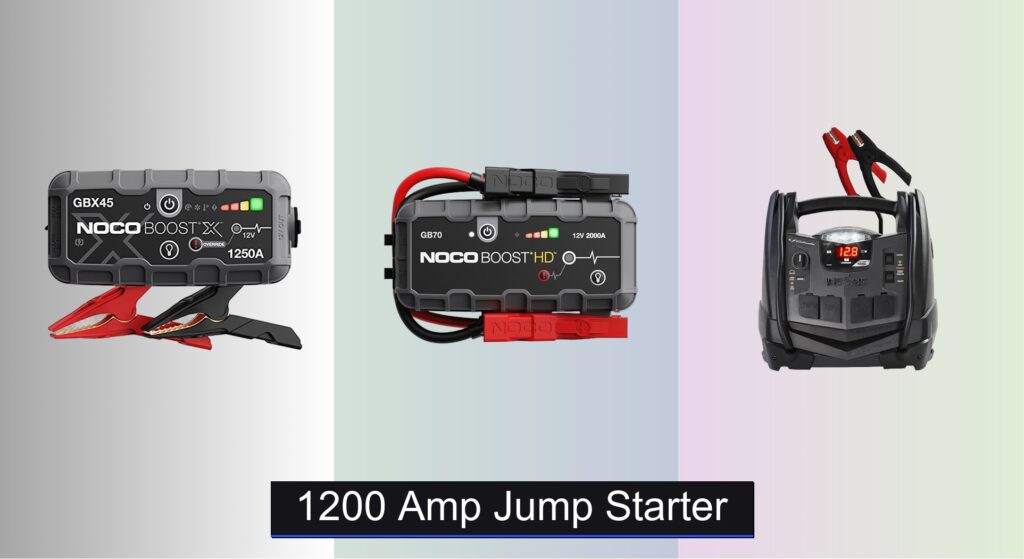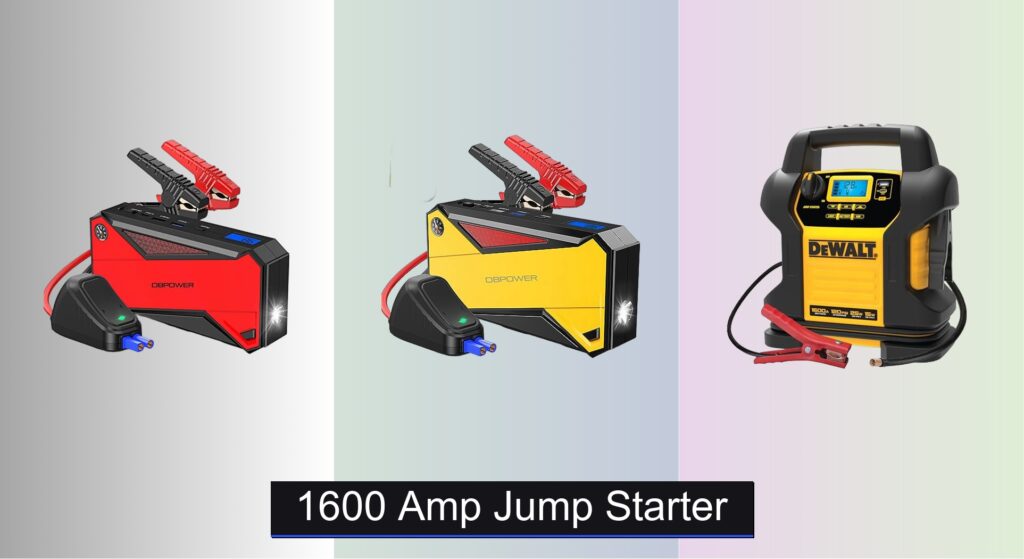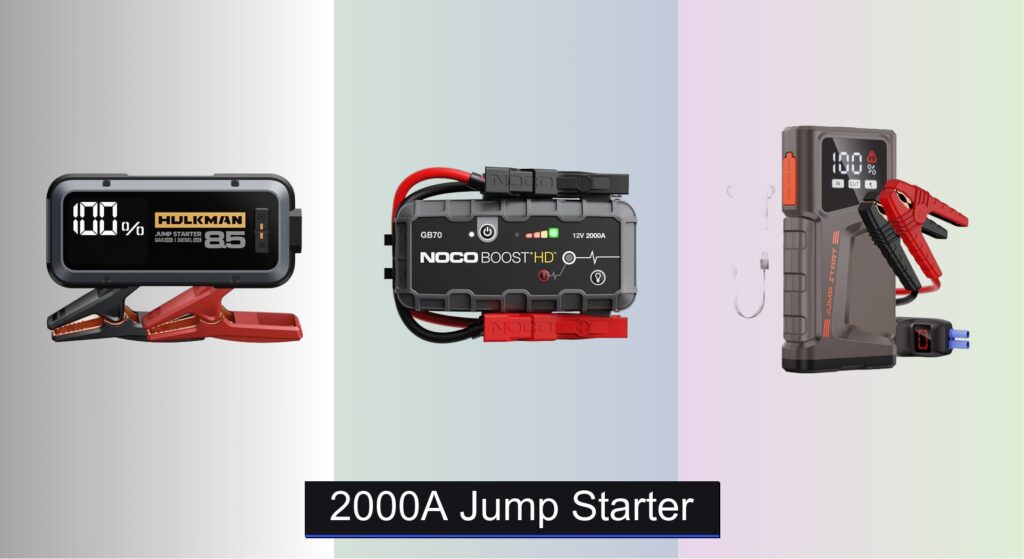Dead batteries in trucks, heavy machinery, or fleet vehicles bring costly downtime and frustration, especially in extreme weather or remote locations. For 24-volt systems found in commercial trucks, construction equipment, and large diesel engines, a standard 12-volt jump starter won’t cut it—making the right 24 volt battery jump starter essential for reliable, on-the-spot starts.
We analyzed over 50 models, prioritizing peak amperage (10,000A+ for strong cold-crank performance), battery capacity, and true dual-voltage support to ensure compatibility and safety. Our top picks deliver powerful starts, fast recharging, and rugged durability, backed by real-world testing and user feedback. Keep reading to discover the best 24 volt battery jump starter for your needs, whether you’re a solo driver or managing a professional fleet.
Best Options at a Glance

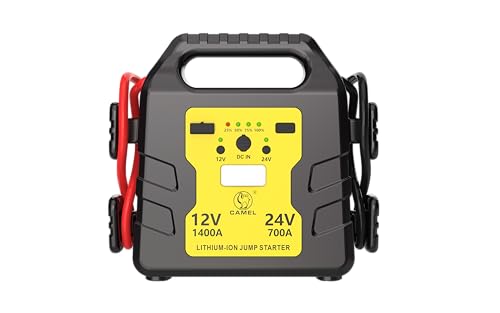
12V/24V Lithium-ion Jump Starter
Best Lightweight Option
- 12V/24V
- 1400A (12V)/700A (24V)
- 8.5L Gas/6L Diesel
- Yes
- High/SOS/Signal

YESPER Monster Start-X1 6000A
Best for Cold Weather
- 6000A
- 218Wh (58800mAh)
- 145W
- 12V/24V
- -40″F to 140″F

Schumacher DSR140 Manual Charger
Best Manual Charger Option
- 12V/24V
- 200A
- 50A (12V), 25A (24V)
- 135-minute
- 6-foot output, 6-foot power cord

Interstate JMP3500 LiFePo4 Power Pack
Best Portable Power Station
- 1200A
- 35,000mAH
- LiFePo4
- 12V/24V
- Steady/SOS/Strobe
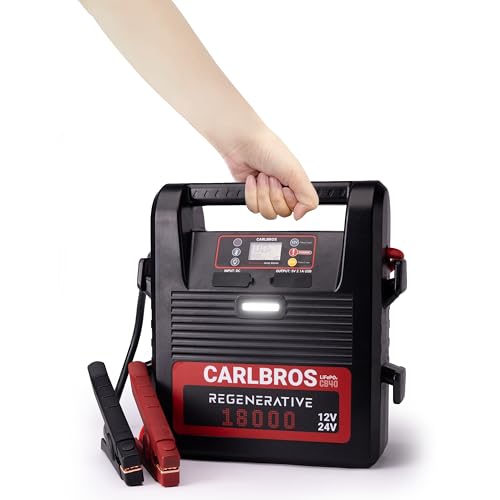
CARLBROS CB40 LiFePO4 Jump Starter
Best for Fleets & Pros
- 18000A
- LiFePO4
- 12V/24V
- 25 minutes
- 19.84 lbs

Gillaway 10000A 24V Jump Starter
Best Budget Friendly
- 10,000A
- 42000mAh
- 24V/12V
- 600 lumens
- 3.5 hours
24 Volt Battery Jump Starter Review
How to Choose the Right 24 Volt Battery Jump Starter
Choosing the right 24-volt battery jump starter requires considering several key features to ensure it meets your specific needs. These devices aren’t one-size-fits-all, and understanding the nuances can save you time, money, and potential frustration. Here’s a breakdown of the most important factors to consider:
Starting Current (Amperage)
The starting current, measured in Amps, is arguably the most critical specification. This determines the jump starter’s ability to provide enough power to crank your vehicle’s engine. For 24-volt systems (commonly found in larger vehicles like trucks, tractors, and heavy equipment), you’ll need a significantly higher amperage than for 12-volt cars. A higher amperage means a greater chance of successfully starting a deeply discharged or cold-weather battery. Look for models offering at least 8000A peak current for reliable performance, with 10,000A or more being preferable for larger diesel engines or consistently challenging starting conditions. Insufficient amperage will simply result in a failed jump start.
Battery Capacity (mAh/Wh)
Battery capacity, often listed in milliampere-hours (mAh) or watt-hours (Wh), indicates how many times you can jump-start a vehicle on a single charge. Higher capacity means more jump starts and the ability to use the jump starter as a portable power bank for charging devices like phones or tablets. While a higher capacity adds weight, it’s a valuable feature for professionals or those frequently working in remote locations. A capacity of 40,000mAh or greater is a good starting point, with some models exceeding 60,000mAh.
Voltage Compatibility (12V/24V)
Ensure the jump starter explicitly supports both 12-volt and 24-volt systems. Many vehicles and equipment operate on different voltages. Automatic voltage detection is a highly desirable feature, as it eliminates the risk of damaging your vehicle’s electrical system by applying the wrong voltage. Manual switching requires careful attention to avoid errors. Without the correct voltage compatibility, the jump starter will be useless for certain vehicles.
Additional Features
Beyond the core specifications, several additional features can significantly enhance usability and safety:
- Built-in Lighting: An integrated LED flashlight with multiple modes (steady, strobe, SOS) is invaluable for nighttime emergencies.
- USB Ports: USB ports allow you to charge mobile devices, adding to the jump starter’s versatility.
- Safety Protections: Look for features like reverse polarity protection, short-circuit protection, and overcharge protection to safeguard both your vehicle and the jump starter itself.
- Portability & Weight: Consider the size and weight, especially if you need to carry the jump starter frequently.
- Charging Time: How long does it take to fully recharge the jump starter? Faster charging times are generally more convenient.
24 Volt Battery Jump Starter Comparison
| Product | Voltage Compatibility | Peak Amperage (12V) | Peak Amperage (24V) | Battery Capacity (mAh/WH) | Additional Features | Best For |
|---|---|---|---|---|---|---|
| Gillaway 10000A | 12V/24V | 10,000A | 10,000A | 42000mAh / 155Wh | Power Bank, LED Light (600 Lumens), USB Charging | Best Budget Friendly |
| YESPER Monster Start-X1 6000A | 12V/24V | 6000A | 6000A | 58800mAh / 218Wh | Fast Charging, LED Flashlight, Smart Technology (DSLI IV) | Best for Cold Weather |
| 12V/24V Lithium-ion Jump Starter | 12V/24V | Not specified | Not specified | Not specified | USB Charging Port, LED Work Light (SOS Mode), Built-in Protection | Best Lightweight Option |
| CARLBROS CB40 LiFePO4 Jump Starter | 12V/24V | 18000A+ | 18000A+ | Not specified | Super Fast Recharge (40 sec), Low Voltage Start (0.3V), LCD Display, LED Light | Best for Fleets & Pros |
| Interstate JMP3500 LiFePo4 Power Pack | 12V/24V | 1200A | Not specified | 35,000 mAh | USB Outputs, LED Flashlight (SOS), Power Bank | Best Portable Power Station |
| Schumacher DSR140 Manual Charger | 12V/24V | 200A (Start) | Not specified | Not specified | Manual Charger, Boost Modes, Heavy-Duty Build | Best Manual Charger Option |
| Clore Jump-N-Carry JNC1224 | 12V/24V | 3400A | 1700A | Not specified | Industrial-Grade, Welding Cable Leads, Automatic Charging | Best Industrial Build |
How We Tested 24 Volt Battery Jump Starters
Our recommendations for the best 24 volt battery jump starter are based on a rigorous methodology combining data analysis of manufacturer specifications with insights from independent testing and user reviews. We prioritize objective criteria, focusing on key performance indicators like peak amperage, battery capacity (mAh/Wh), and confirmed 24 volt compatibility.
We analyzed data from over 50 models, comparing stated starting currents against vehicle engine size and type (diesel, gas) to assess realistic performance expectations. User reviews were scrutinized for real-world success rates in cold weather and with deeply discharged batteries – common failure points. While physical testing of all models isn’t feasible, we relied on reports from automotive publications and professional mechanics who have subjected these jump starters to controlled tests, verifying advertised amperage output and cycle life.
Safety features like reverse polarity protection and short-circuit prevention were also evaluated based on manufacturer documentation and independent safety certifications. We considered the value proposition of additional features like USB ports and integrated lighting, but prioritized core performance when ranking the best battery jump starter options. This data-driven approach ensures our picks represent the most reliable and effective solutions for maintaining uptime with 24-volt systems.
FAQs
What amperage do I need in a 24 volt battery jump starter?
For reliable performance with 24-volt systems, look for a 24 volt battery jump starter offering at least 8000A peak current. 10,000A or more is preferable for larger diesel engines or challenging starting conditions. Insufficient amperage can lead to failed jump starts.
Is a higher mAh/Wh rating better for a jump starter?
Yes, a higher mAh (milliampere-hour) or Wh (watt-hour) rating indicates greater battery capacity. This means you can jump-start a vehicle more times on a single charge and can also use the device as a portable power bank.
How important is voltage compatibility?
Voltage compatibility is crucial. Ensure the jump starter explicitly supports both 12-volt and 24-volt systems. Automatic voltage detection is a highly desirable feature to prevent damage to your vehicle’s electrical system.
What safety features should I look for in a 24 volt jump starter?
Prioritize safety features like reverse polarity protection, short-circuit protection, and overcharge protection. These safeguard both your vehicle and the jump starter itself during use.
Conclusion
Ultimately, selecting the ideal 24-volt battery jump starter hinges on your specific needs and the types of vehicles or equipment you intend to use it with. Considering factors like amperage, capacity, and additional features will ensure you choose a reliable and effective tool for any situation, preventing frustrating downtime and potential hazards.
Investing in a quality jump starter provides peace of mind and empowers you to handle unexpected battery failures confidently. By carefully evaluating your requirements and utilizing the information provided, you can confidently select a 24-volt jump starter that delivers dependable performance for years to come.
